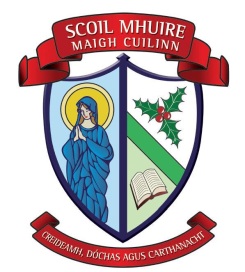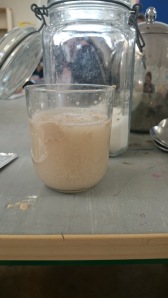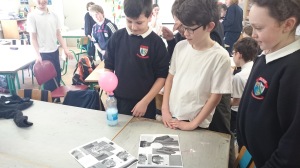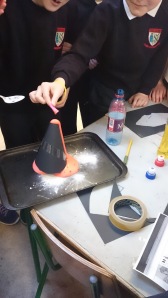
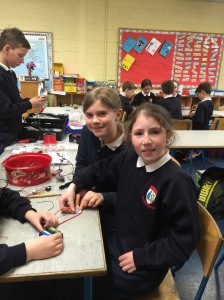


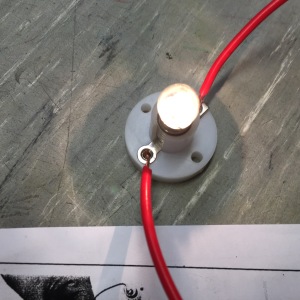
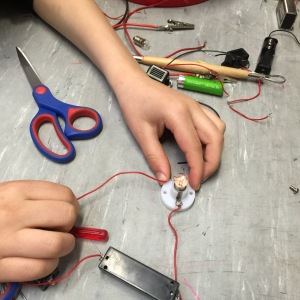


Rang a 3 & 4 had great fun showing off their science experiments and explaining them to the other classes and parents. We are really looking forward to our upcoming science day where we will show our work to the wider community.
Month: April 2016
Visit to Electronic Concepts
Rang a 5 and Rang a 6 went to Oughterard to visit Electronic Concepts where they manufacture electronic components.
They had a tour of the factory and got to see first hand how capacitators are made.
The company has been in operation since 1982.
Yeast & Carbon dioxide
The purpose of any leavener is to produce the gas that makes bread rise. Yeast does this by feeding on the sugars in flour, and expelling carbon dioxide in the process.
While there are about 160 known species of yeast, Saccharomyces cerevisiae, commonly known as baker’s yeast, is the one most often used in the kitchen. Yeast is tiny: Just one gram holds about 25 billion cells. That amount of fungi can churn out a significant amount of carbon dioxide, provided it has the simple sugars it uses as food.
Rang a 5 had fun watching the yeast expelling carbon dioxide.
Classes involved: Rang a 5 Ms Joyce
Energy and forces
Germs
Senior infants explored the effects of washing their hands with an experiment. First they used a fresh piece of bread and put it into a bag. After they all handled a piece of bread and then put it in a bag and finally they washed their hands and handled another piece of bread. The results can be seen on the three pieces of bread.
Classes involved: Senior Infants – Ms Brown / Ms Cotter
Hovercrafts
Rang a 3/4 had great fun investigating energy and forces by making hovercrafts.
Classes involved: Rang a 3/4 Ms Grealish
Effects of heat on food
Making pizzas – Rang a 3 were examining the effects of heat on different foods by making pizzas. They had lots of fun and the pizzas were delicious !
Raising frogs
Rang a 1 decided it would be fun to raise some frogs in our classroom. We set up a big fish tank and we were lucky enough to get some tadpoles. We have been watching them grow over the last few weeks. All of them have their back legs now and one of them had to be released today as he had turned into a proper frog and needs flies to eat! We learned that they are really fast swimmers and it is really interesting to watch them change.
